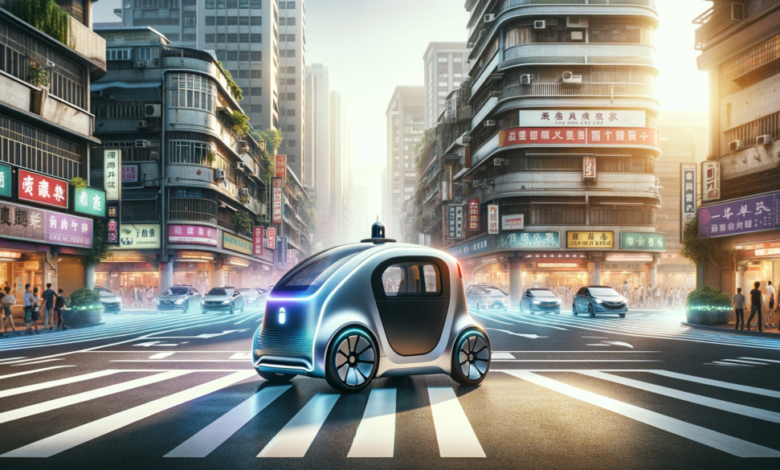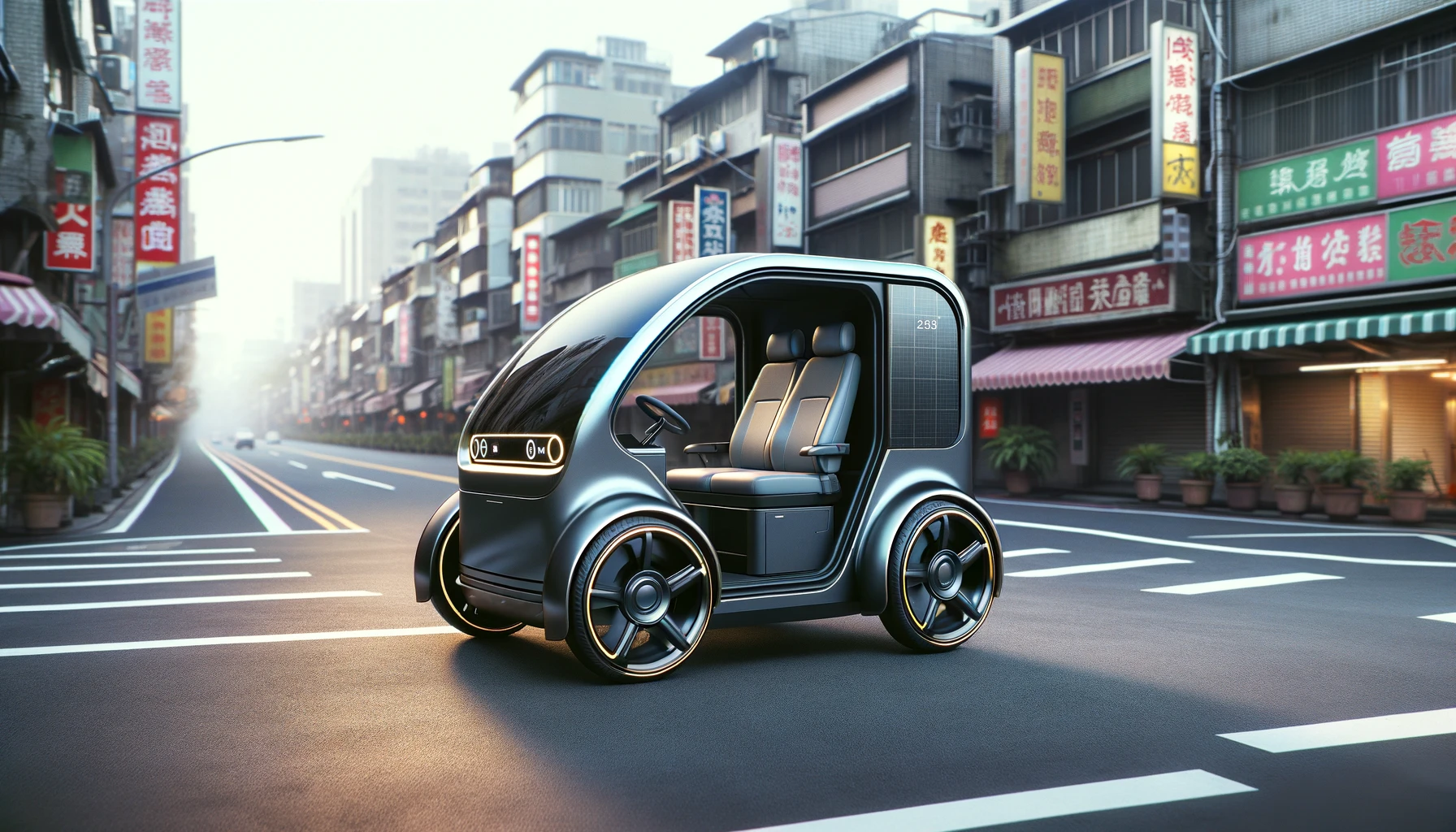Taiwan Self-Driving Gharry: Revolutionizing Urban Transportation

Table of Contents
ToggleIntroduction
The landscape of urban transportation is rapidly evolving, driven by technological advancements and changing consumer preferences. One of the most intriguing developments in this space is the Taiwan self-driving gharry. This autonomous vehicle combines traditional transportation elements with cutting-edge technology, offering a glimpse into the future of urban mobility. As cities worldwide grapple with congestion and pollution, Taiwan’s self-driving gharry presents a potential solution that is not only efficient but also deeply rooted in local culture. In this article, we will delve into what self-driving gharry is, its significance in Taiwan, the technology behind it, and its potential implications for the future of transportation.
Understanding the Gharry: A Cultural Icon
Before we dive into the technological aspects, it’s essential to understand what a gharry is. Traditionally, gharry refers to a horse-drawn carriage used in many Asian countries. In Taiwan, the gharry is often associated with the charm of local heritage and tourism, providing a unique mode of transportation that connects visitors to the rich history of the region.
However, as urbanization continues to reshape Taiwan’s cities, the introduction of the self-driving gharry aims to modernize this iconic vehicle while preserving its cultural significance. By transforming the gharry into a self-driving vehicle, Taiwan aims to blend tradition with innovation, making urban transport both exciting and sustainable.
The Technology Behind Self-Driving Gharry
1. Autonomous Navigation Systems
At the heart of the self-driving gharry is a sophisticated autonomous navigation system. This technology relies on a combination of sensors, cameras, and artificial intelligence (AI) to interpret the surrounding environment. The gharry is equipped with LIDAR (Light Detection and Ranging) technology, which helps it to create detailed maps of its surroundings by measuring distances using laser light. This enables the vehicle to detect obstacles, pedestrians, and other vehicles, ensuring safe navigation through bustling city streets.
2. Machine Learning Algorithms
To operate efficiently, self-driving gharrys use machine learning algorithms that allow the vehicle to learn from experience. Over time, the gharry can adapt to various driving conditions and make better decisions based on previous encounters. For example, the vehicle may learn to handle busy intersections or identify areas where pedestrians are likely to cross. This continuous learning process is crucial for improving safety and efficiency.
3. Connectivity and Data Sharing
Self-driving gharrys are designed to be connected vehicles. This means they can communicate with each other as well as with traffic management systems. Such connectivity enables real-time data sharing about traffic conditions, allowing the gharry to optimize its route for speed and safety. This is particularly important in urban settings where traffic congestion is common.
4. User-Friendly Interface
To enhance the user experience, self-driving gharrys feature an intuitive interface that allows passengers to interact with the vehicle. Passengers can input their destination via a mobile app or an onboard touchscreen, select their preferred routes, and even enjoy entertainment options during their ride. This seamless interaction between the user and the vehicle is key to encouraging widespread adoption.
Benefits of Self-Driving Gharry in Taiwan
1. Enhanced Urban Mobility
One of the primary benefits of self-driving gharrys is their potential to improve urban mobility. By providing a reliable and efficient mode of transportation, these vehicles can reduce traffic congestion and minimize wait times for passengers. This is particularly significant in cities where traditional transportation options may be limited.
2. Eco-Friendly Transportation
The self-driving gharry is designed to be environmentally friendly. Many models are electric or hybrid vehicles, which contribute to reducing carbon emissions in urban areas. As cities like Taipei strive to meet sustainability goals, integrating self-driving gharrys into the transportation system can play a crucial role in promoting greener urban living.
3. Cultural Preservation
By modernizing the gharry, Taiwan has an opportunity to preserve its cultural heritage while embracing innovation. The self-driving gharry not only retains the aesthetic appeal of the traditional gharry but also introduces a novel experience for both locals and tourists. This blend of old and new is likely to attract interest and tourism, enhancing Taiwan’s cultural profile on the global stage.
4. Increased Safety
Self-driving technology is designed with safety as a priority. The use of advanced sensors and AI minimizes the risk of accidents caused by human error, which is a leading cause of traffic incidents. The introduction of self-driving gharrys can thus contribute to safer streets for pedestrians and passengers alike.
5. Cost-Effective Solution
Operating a self-driving gharry can be more cost-effective than traditional transportation methods. Reduced labor costs, fuel efficiency, and the potential for lower maintenance expenses can make this mode of transport economically viable for both operators and passengers.
Challenges and Considerations
1. Regulatory Hurdles
While the technology for self-driving vehicles is advancing rapidly, regulatory frameworks have not kept pace. In Taiwan, policymakers will need to establish regulations that govern the operation of self-driving gharrys to ensure safety and public acceptance.
2. Public Acceptance
Public perception of self-driving technology can vary widely. Educating the community about the benefits and safety measures associated with self-driving gharrys will be crucial for fostering acceptance. Engaging with residents through demonstrations and pilot programs can help alleviate concerns and promote understanding.
3. Infrastructure Development
For self-driving gharrys to operate effectively, cities will need to invest in the necessary infrastructure. This includes smart traffic signals, dedicated lanes, and charging stations for electric vehicles. Collaboration between government agencies, private companies, and technology developers will be essential for creating an environment conducive to autonomous vehicles.
4. Cybersecurity Concerns

As with any connected technology, cybersecurity is a concern for self-driving gharrys. Protecting the vehicle’s systems from hacking or data breaches is vital to ensure passenger safety and maintain public trust in the technology.
Frequently Asked Questions (FAQs)
1. What is a self-driving gharry?
A self-driving gharry is an autonomous vehicle inspired by the traditional gharry, designed to navigate urban environments using advanced sensors and AI technology.
2. How does the self-driving gharry navigate?
The self-driving gharry uses a combination of LIDAR, cameras, and machine learning algorithms to interpret its surroundings and make real-time decisions for safe navigation.
3. What are the benefits of self-driving gharrys in Taiwan?
Benefits include enhanced urban mobility, eco-friendly transportation, cultural preservation, increased safety, and cost-effectiveness.
4. What challenges does the self-driving gharry face?
Challenges include regulatory hurdles, public acceptance, infrastructure development, and cybersecurity concerns.
5. How can I experience a self-driving gharry in Taiwan?
While self-driving gharrys are still in development, pilot programs and demonstrations may be available in certain areas. Check with local transportation authorities for updates.
Conclusion
The Taiwan self-driving gharry represents a fascinating intersection of tradition and technology, offering an innovative solution to modern urban transportation challenges. By enhancing mobility, promoting sustainability, and preserving cultural heritage, this autonomous vehicle has the potential to transform the way people navigate Taiwan’s vibrant cities. While challenges remain, the future of self-driving gharrys looks promising, paving the way for a new era of transportation that honors the past while embracing the possibilities of the future. As cities around the world look for innovative solutions to their transportation woes, Taiwan’s self-driving gharry could serve as a model for others to follow.




